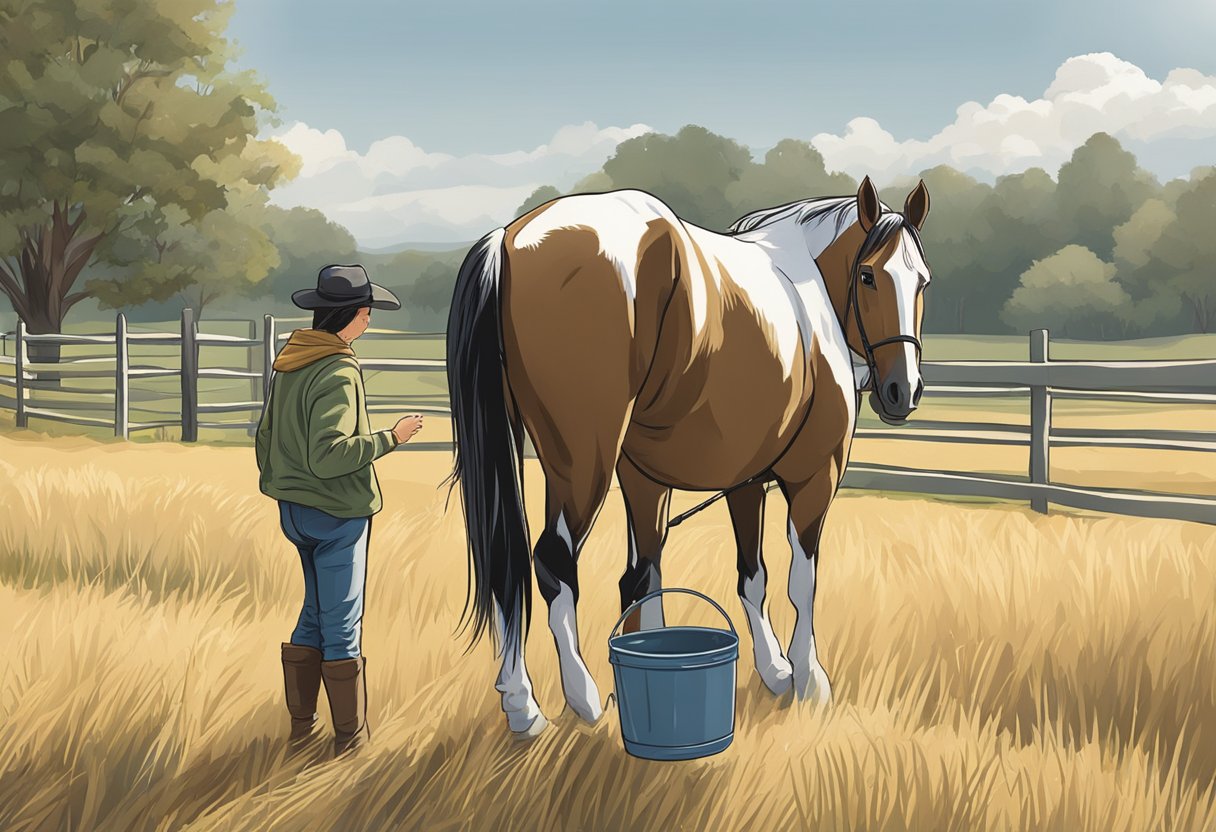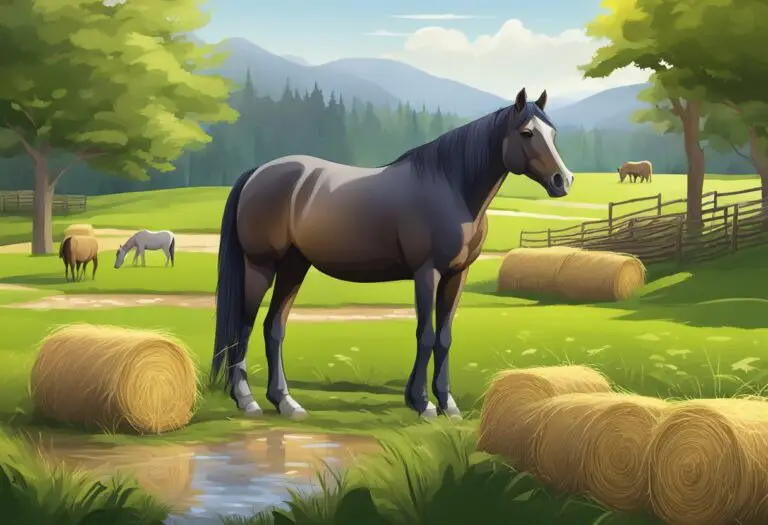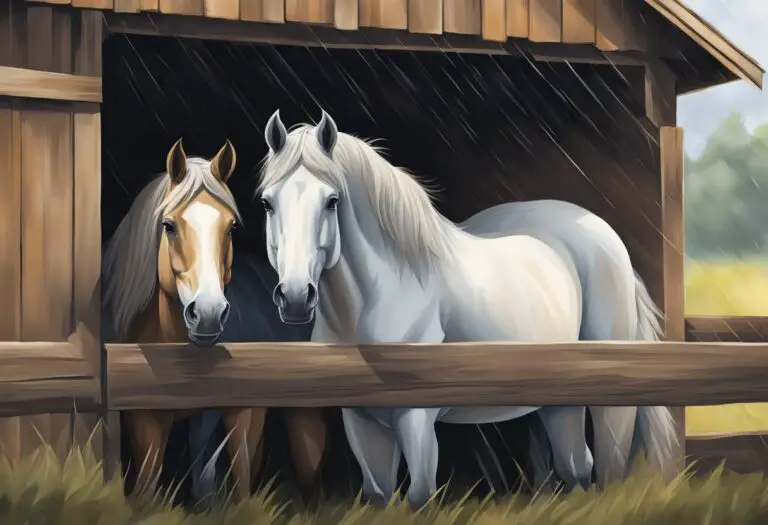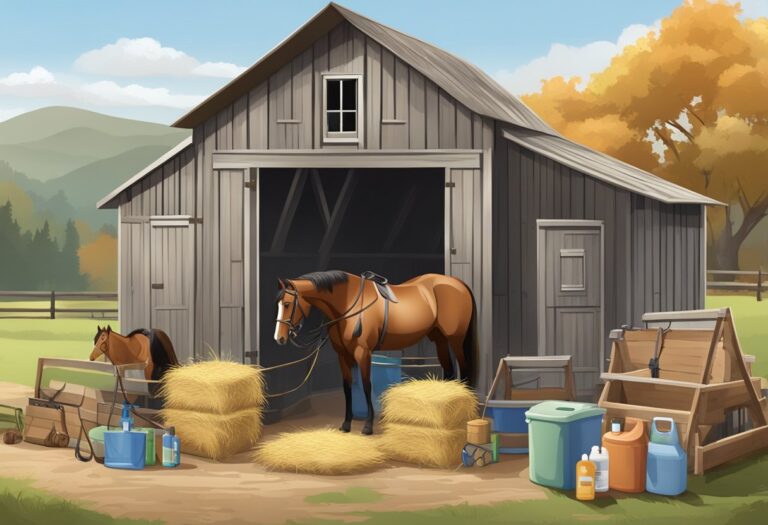How to Feed a Horse Properly? A Guide for Horse Owners
Feeding a horse properly is essential for maintaining its health and well-being. Horses require a balanced diet that provides them with the necessary nutrients, vitamins, and minerals to support their growth and development. While feeding a horse may seem straightforward, there are many factors to consider to ensure that the horse is receiving the appropriate amount and type of feed.
One of the first things to consider when feeding a horse is its age, weight, and activity level. Younger horses and those that are more active require more feed than older or less active horses. The type of feed also matters, as some horses may have dietary restrictions or require specific types of feed due to health concerns. Additionally, the quality of the feed should be considered, as low-quality feed can lead to health problems such as colic or laminitis.
In this article, we will explore the different types of feed available for horses and how to determine the appropriate amount and type of feed for your horse. We will also discuss common feeding mistakes and how to avoid them, as well as the importance of providing clean water and proper forage for your horse. By following these guidelines, you can ensure that your horse receives the proper nutrition it needs to stay healthy and happy.
Understanding Equine Nutrition

Horses, like all living creatures, require a balanced diet to maintain good health. Understanding the basics of equine nutrition is crucial for horse owners to ensure their animals receive the necessary nutrients to thrive.
Essential Nutrients for Horses
Horses require six essential nutrients to maintain good health: water, carbohydrates, fats, proteins, vitamins, and minerals. Each nutrient plays a vital role in the horse’s body, and a deficiency in any of them can cause health problems.
Water is the most crucial nutrient for horses. Without water, horses can quickly become dehydrated, leading to a range of health issues. Horses should have access to clean, fresh water at all times.
Carbohydrates, fats, and proteins are the primary sources of energy for horses. Carbohydrates and fats are essential for providing horses with the energy they need to perform daily activities, while proteins are necessary for building and repairing tissues.
Vitamins and minerals are essential for maintaining the horse’s overall health. Vitamins play a crucial role in the horse’s immune system, while minerals are necessary for bone and muscle health.
The Role of Roughage
Roughage, such as hay and pasture, should make up the majority of a horse’s diet. Roughage provides horses with the necessary fiber to maintain good digestive health. Horses should consume at least 1.5% of their body weight in roughage each day.
Concentrates and Supplements
Concentrates, such as grains, and supplements should only be fed to horses in moderation. Concentrates should only make up a small portion of the horse’s diet, as overfeeding can lead to health problems such as colic and laminitis.
Supplements should only be given to horses if there is a specific deficiency that cannot be addressed through diet alone. Over-supplementing can lead to toxicity and other health issues.
In conclusion, understanding equine nutrition is crucial for horse owners to ensure their animals receive the necessary nutrients to maintain good health. A balanced diet consisting of roughage, concentrates, and supplements (if necessary) can help horses thrive and live a healthy life.
Assessing Your Horse’s Dietary Needs

Feeding a horse properly requires an understanding of their dietary needs. Before deciding on a feeding plan, it’s essential to assess your horse’s life stage, activity level, body condition, and weight.
Determining Life Stage and Activity Level
The horse’s life stage and activity level are critical factors to consider when assessing their dietary needs. Young horses, pregnant or lactating mares, and performance horses require more nutrients than mature horses or those with a lower activity level.
To determine your horse’s life stage, consider their age and reproductive status. Young horses require more protein and minerals to support growth and development. Pregnant or lactating mares need additional nutrients to support the growth and development of their foal. Performance horses require more energy to fuel their activity level.
Recognizing Body Condition and Weight
Assessing your horse’s body condition and weight is crucial to determine their feeding plan. A horse’s body condition score (BCS) is a numerical rating system that evaluates the amount of body fat and muscle mass. The ideal BCS for most horses is between 5 and 6 on a scale of 1 to 9.
To determine your horse’s BCS, evaluate their overall appearance, including their ribs, spine, and hips. A horse with a BCS of 4 or less is underweight, while a horse with a BCS of 7 or more is overweight.
Once you have determined your horse’s BCS, you can adjust their feeding plan accordingly. Underweight horses require more calories and protein to gain weight and build muscle mass. Overweight horses need to consume fewer calories and more fiber to maintain a healthy weight.
In conclusion, assessing your horse’s life stage, activity level, body condition, and weight is crucial to determine their dietary needs. By understanding these factors, you can create a feeding plan that meets your horse’s nutritional requirements and promotes their overall health and well-being.
Feeding Practices

Consistency and Feeding Times
Consistency is key when it comes to feeding horses. Horses should be fed at the same time every day to help maintain a healthy digestive system. It is recommended to feed horses at least twice a day, with a maximum of three to four times a day.
Horses are creatures of habit and thrive on routine. Feeding them at the same time every day helps them feel secure and comfortable. Feeding times should be consistent, regardless of whether it’s a weekday or weekend.
Proper Portion Sizes
Feeding horses the proper portion size is crucial to their overall health. Overfeeding can lead to obesity, while underfeeding can cause malnourishment and other health problems.
The amount of feed a horse needs depends on its age, weight, and level of activity. It is important to follow the feeding instructions on the feed bag or consult with a veterinarian to determine the appropriate portion size.
Safe Feeding Techniques
Feeding horses requires safe techniques to prevent injury to both the horse and the handler. When feeding, always stand to the side of the horse and never directly in front of it. This helps prevent the horse from accidentally kicking or stepping on the handler.
It is also important to use safe feeding equipment, such as sturdy buckets and hay nets, to prevent injury. Horses should be given plenty of access to fresh, clean water at all times.
By following these feeding practices, horse owners can help ensure their horses maintain a healthy diet and overall well-being.
Choosing the Right Feed

Feeding a horse properly is crucial for its health and well-being. Choosing the right feed is an important aspect of horse care. This section will cover the different types of horse feed, how to read feed labels, and selecting quality hay.
Types of Horse Feed
There are three main types of horse feed: hay, grain, and supplements. Hay is the most important part of a horse’s diet and should make up the majority of its feed. Grain is used to supplement a horse’s diet and provide additional energy. Supplements are used to provide additional nutrients that may be lacking in a horse’s diet.
Reading Feed Labels
When choosing a horse feed, it’s important to read the feed label carefully. The label will provide information on the ingredients, nutrient levels, and feeding instructions. Look for feeds that are labeled as “complete” or “balanced” as they will provide all the necessary nutrients for your horse. Avoid feeds that contain excessive amounts of sugar or starch, as they can lead to digestive issues and laminitis.
Selecting Quality Hay
Selecting quality hay is essential for a horse’s health. Look for hay that is green, leafy, and free from dust and mold. The type of hay you choose will depend on your horse’s nutritional needs and activity level. Alfalfa hay is high in protein and is a good choice for horses that need extra protein. Timothy hay is lower in protein and is a good choice for horses that are less active.
In conclusion, choosing the right feed is an important aspect of horse care. By selecting the right type of feed, reading feed labels, and selecting quality hay, you can ensure that your horse receives the proper nutrition it needs to stay healthy and happy.
Common Feeding Problems

Avoiding Colic
Colic is a common problem that can occur in horses due to improper feeding. To avoid colic, it is important to ensure that the horse is fed a balanced diet with plenty of roughage. It is also important to avoid sudden changes in the horse’s diet, as this can upset the digestive system and lead to colic.
Preventing Choking
Choking is another common problem that can occur in horses. This can happen when the horse eats too quickly or when the feed is not properly chewed. To prevent choking, it is important to ensure that the horse is fed slowly and that the feed is properly chewed. It is also important to avoid feeding the horse large amounts of feed at one time.
Managing Dietary Allergies
Some horses may have dietary allergies that can cause problems such as skin irritation, digestive issues, and respiratory problems. To manage dietary allergies, it is important to identify the specific allergen and avoid feeding it to the horse. This may involve working with a veterinarian to conduct allergy testing and develop a specialized diet for the horse.
By following these tips, horse owners can help prevent common feeding problems and ensure that their horses receive a balanced and healthy diet.
Monitoring Horse Health

Regular monitoring of a horse’s health is essential to ensure that the animal is receiving the proper nutrition and care. This section will cover the key aspects of monitoring a horse’s health, including regular veterinary checkups, observing eating behavior, and adjusting the diet for health issues.
Regular Veterinary Checkups
Regular veterinary checkups are crucial for maintaining a horse’s health. During these checkups, the veterinarian will examine the horse’s overall condition, including its weight, coat, and hooves. The veterinarian will also perform a dental exam to ensure that the horse’s teeth are healthy and properly aligned.
In addition to these exams, the veterinarian may also recommend blood work or other tests to check for any underlying health issues. By catching any health problems early, the veterinarian can recommend the appropriate treatment and help prevent more serious issues from developing.
Observing Eating Behavior
Observing a horse’s eating behavior is an important part of monitoring its health. Horses should have access to clean, fresh water at all times, and their feed should be of high quality and free from mold or other contaminants.
If a horse appears to be eating less than usual or is exhibiting other signs of discomfort, it may be experiencing a health issue. In these cases, it is important to consult with a veterinarian to determine the underlying cause and provide appropriate treatment.
Adjusting Diet for Health Issues
In some cases, a horse may require a specialized diet to address specific health issues. For example, horses with metabolic disorders may require a low-sugar diet, while those with digestive issues may benefit from a diet that is high in fiber.
Consulting with a veterinarian or equine nutritionist can help determine the best diet for a horse’s specific health needs. It is important to make any dietary changes gradually to avoid causing digestive upset or other issues.
Overall, proper monitoring of a horse’s health is essential for ensuring that the animal receives the proper nutrition and care. Regular veterinary checkups, observing eating behavior, and adjusting the diet for health issues are all important aspects of maintaining a horse’s health and well-being.







